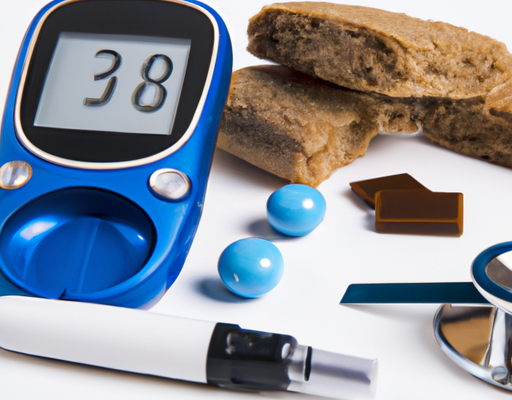Definition and diagnosis of glaucoma
Glaucoma is a potentially blinding eye disorder that is caused by increased pressure in the eye. It is one of the most common causes of vision loss in the world. Glaucoma results from an imbalance between the amount of fluid produced by the eye and the amount that is drained out. This causes the pressure inside the eye to increase, leading to optic nerve damage and vision loss. Early diagnosis and treatment of glaucoma is important to prevent further vision loss. Diagnosis is made through a comprehensive eye exam, including measurement of the pressure inside the eye and testing for visual field defects. Treatment for glaucoma can include the use of medications and surgery to reduce the pressure inside the eye. Early diagnosis and treatment of glaucoma can help prevent further vision loss and protect your vision in the future.
Risk factors of glaucoma
Glaucoma and diabetes are two of the most common causes of blindness, so it is important to understand the health risks associated with these two conditions. Glaucoma is a condition in which the pressure inside the eye is too high, leading to damage to the optic nerve. This can cause vision loss or even blindness if left untreated. Risk factors for developing glaucoma include advancing age, family history, eye injury or high pressure in the eye, and pre-existing conditions like diabetes. People of African descent and those with a family history of glaucoma are more likely to develop glaucoma than other groups. Additionally, those with diabetes should pay special attention to their eye health, as this condition may also increase their risk for glaucoma. Regular eye exams with an optometrist or ophthalmologist are important for keeping an eye on one’s risk factors for glaucoma, as early diagnosis and care can greatly reduce damage to the optic nerve.
Types of glaucoma
Glaucoma is a group of eye diseases that can damage the optic nerve and cause vision loss. It is the leading cause of blindness in the world. There are several types of glaucoma, including:
- Open-angle glaucoma
- Angle-closure glaucoma
- Normal-tension glaucoma
- Secondary glaucoma
Open-angle glaucoma is the most common type of glaucoma. It is caused by an abnormality in the eye’s drainage channel and can lead to a buildup of pressure in the eye. Angle-closure glaucoma is caused by a blockage in the eye’s drainage channel and can cause sudden, severe eye pain and blurred vision. Normal-tension glaucoma occurs when the eye pressure is normal, but the optic nerve is damaged. Secondary glaucoma is caused by other eye diseases or medications. Regardless of the type, glaucoma can cause significant vision loss if left untreated. Early diagnosis and treatment are key to preventing vision loss.
Causes of glaucoma
Glaucoma is a serious eye condition that can lead to permanent vision loss and blindness. It is caused by a buildup of pressure inside the eye which can damage the optic nerve and cause vision loss. Common causes of glaucoma include high pressure in the eye due to increased fluid production, blockage of the drainage angle of the eye, and genetic factors. Age is also a risk factor, as we get older our body produces less of the chemicals that regulate pressure in our eyes, leading to an increased risk of glaucoma. Additionally, certain medical conditions such as diabetes, high blood pressure, and thyroid problems can also increase the risk of developing glaucoma. Finally, certain medications and activities such as taking steroids or engaging in contact sports can also increase the risk of developing glaucoma. It is essential to see your doctor for regular eye checkups to detect any signs of glaucoma. Early detection and treatment can reduce the risk of vision loss from glaucoma.
Symptoms of glaucoma
Glaucoma is a serious eye condition that can lead to loss of vision if left untreated. Symptoms of glaucoma include vision changes, such as blurry vision, seeing spots or halos, or having difficulty seeing in dim lighting. Other symptoms of glaucoma include redness or pressure in the eye and severe headaches or eye pain. If you experience any of these symptoms, it is important to talk to a doctor or eye specialist and get an eye exam for prompt and accurate diagnosis. Glaucoma is often diagnosed with specialized tests that measure the pressure in the eye and the thickness of the eye’s nerve fibers. Treatment of glaucoma is based on the type and severity of the condition, and can include medicines, laser treatments, or surgery to reduce intraocular pressure and preserve vision.
Diagnosis of diabetes
Diabetes is a serious health condition that can lead to a host of complications if left untreated. One of the most common of these complications is glaucoma, a condition where pressure builds up in the eyes and can cause vision loss. It is important to diagnose diabetes early on to reduce the risk of developing glaucoma, as well as other complications such as heart disease, stroke, and kidney disease. A diagnosis is typically made after a physical exam and lab tests to determine the level of glucose in the blood, as well as a urine analysis to check for glucose in the urine. Early diagnosis and treatment are critical for managing diabetes and keeping complications to a minimum.
Risk factors of diabetes
Diabetes is a serious condition that can cause health complications and increase the risk of developing glaucoma. Diabetes can also lead to vision issues, as well as other long-term health problems. To reduce your risk of developing diabetes and its associated complications, it is important to know the risk factors of this condition. Here is an overview of the common risk factors of diabetes:
- Being overweight or obese
- Family history of diabetes
- Being physically inactive
- Eating unhealthy foods
- Smoking
- Having high blood pressure
- Having high cholesterol levels
- Having prediabetes
- Having gestational diabetes
- Being of African/Caribbean, South Asian or Middle Eastern descent
It is important to recognize these risk factors and take steps to reduce them. Eating a healthy diet, exercising regularly, maintaining a healthy weight and not smoking are all important steps to reduce the risk of diabetes and its associated complications. It is also important to get regular health screenings to detect diabetes early and start treatment as soon as possible.
Types of diabetes
Diabetes, which is characterized by high levels of sugar in the blood, is a common health condition that can lead to serious complications when left untreated or managed poorly. Type 1 diabetes is an autoimmune condition and is usually diagnosed in children and young adults. This form of diabetes occurs when the body’s immune system mistakenly attacks and destroys the cells in the pancreas that produce insulin. Type 2 diabetes is much more common, affecting about 90% of people with diabetes, and is usually diagnosed in people over the age of 40. It is caused by a combination of genetic and lifestyle factors and is characterized by the body’s cells not responding to insulin, resulting in an inability to regulate blood sugar levels. Both types of diabetes can lead to serious complications, such as glaucoma, blindness, kidney damage, nerve damage, and heart disease. It is important to manage diabetes well in order to reduce the risk of complications and maintain good health.
Causes of diabetes
Diabetes is a chronic condition that is managed by controlling blood sugar levels. However, uncontrolled blood sugar levels can lead to serious health risks, including glaucoma and diabetes complications. Here are the common causes of glaucoma and diabetes complications:
- Poor Eating Habits – Eating excessive sugary and fatty foods or skipping meals can cause blood sugar levels to rise quickly.
- Physical Inactivity – Sitting for long periods of time and lack of physical activity can cause the body’s glucose to increase.
- High Blood Pressure – Uncontrolled high blood pressure has been linked to an increased risk of diabetes and glaucoma complications.
- Obesity – People who are obese have a higher risk of developing diabetes and glaucoma.
- Mental Health – Anxiety and depression can lead to unhealthy eating habits and a lack of physical activity.
Without proper management, these common causes of glaucoma and diabetes can lead to serious health complications. It is essential for those living with diabetes to maintain a healthy lifestyle and monitor blood sugar levels closely.
Symptoms of diabetes
Diabetes is a condition that affects millions of people around the world. It can lead to a number of complications, and proper management is essential to prevent further health issues. People with diabetes may experience a variety of symptoms, including:
- Frequent urination
- Excessive thirst
- Intense hunger
- Unexplained weight loss
- Fatigue
- Blurred vision
- Slow-healing sores
- Frequent infections
These symptoms may sometimes be mild and easily overlooked, but if they become more pronounced, it’s important to consult a doctor as soon as possible. Diabetes can cause complications such as glaucoma, damage to the blood vessels and nerves, and increased risk of heart disease. To avoid these conditions and reduce the risk of further health problems, it’s essential to take the necessary steps to manage diabetes properly.
Relationship between glaucoma and diabetes
It is widely accepted that there is a strong relationship between glaucoma and diabetes. Both of these conditions can cause significant damage to the eyes, with complications ranging from loss of vision to even blindness. Glaucoma is a condition where the pressure within the eye increases, which can damage the optic nerve and lead to vision loss. Diabetes, on the other hand, can cause damage to the blood vessels within the eye, which can lead to retinopathy, cataracts, and glaucoma. People who are diabetic are at a higher risk for developing glaucoma, as well as for having it progress more quickly than normal. Because of this, it is important for those with diabetes to have their eyes checked regularly by an ophthalmologist in order to detect any signs of glaucoma early and begin treatment before permanent vision damage occurs. Additionally, regular exercise and a healthy diet are essential for controlling diabetes and can help protect against the development of glaucoma.
Common complications associated with glaucoma and diabetes
Glaucoma and diabetes are both serious illnesses that can have devastating consequences if left untreated. Both have their own set of complications associated with them that can be difficult to manage. People with glaucoma may experience gradual vision loss if their glaucoma is not treated, while those with diabetes may be at risk for complications such as heart disease, stroke, blindness, kidney disease and nerve damage. People with glaucoma or diabetes may also experience other side effects such as fatigue, dizziness, and weight loss. It is essential for people who are diagnosed with either condition to be aware of the complications associated with it and to work closely with their medical team to ensure that their treatment and care plan is tailored to their individual needs. Proper management of glaucoma or diabetes can help to reduce the risk of complications and keep those affected living life to the fullest.





No Comments